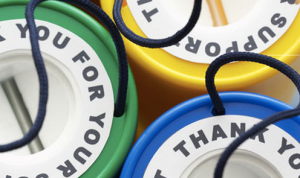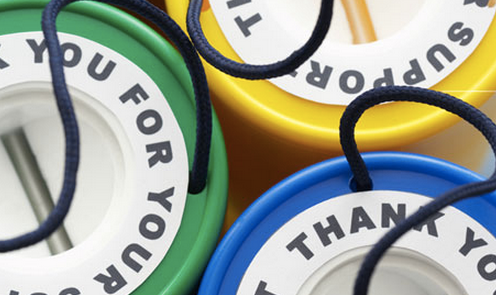 With every fundraising event and appeal there will be new givers. What inspired that donor to support your organization? Will they give again? How can your organization grow them into a monthly donor? All of these questions and more are part of the exciting, unpredictable and, hopefully, rewarding donor retention process.
With every fundraising event and appeal there will be new givers. What inspired that donor to support your organization? Will they give again? How can your organization grow them into a monthly donor? All of these questions and more are part of the exciting, unpredictable and, hopefully, rewarding donor retention process.
Most experts agree that donors require at least six personal contacts each year. This is contact outside of general newsletters, mailings and appeals. Personal contacts include a phone call, email, coffee meeting or other personal contact. With the popularity of social media, these contacts can also include tweets or tags. Making these small investments of time in new givers can pay off big as they grow into faithful donors.
LifeTrends President, Kirk Walden, who serves as a consultant for nonprofit agencies across the country, breaks down the time investment. “$500,000 in one year is . . . 1,667 people giving $25 per month each year. That’s a lot of people, sure. But it is not impossible. So just for fun, let’s do the math. If you have someone working 30 hours per week and on average, gaining one supporter every 5 hours or 6 new supporters per week, after 50 weeks you have 300 new supporters!” While it takes time to reach $500,000 in new donations, Walden encourages the agencies he works for not to be discouraged, but make a plan and stay on target.
Growing a giver into a donor can start with a simple thank you. According to Urban.org’s Donor Retention Report earlier this year, 80% of donors said that a thank you letter after their first gift would be enough to spur them to give again. Whenever possible, a handwritten thank you is a nice touch.
Keeping donors updated and engaged is another important part of retaining donors. Knowing your audience and showing them appreciation goes a long way. Has a donor or group gone above and beyond by, not only giving financially, but perhaps completing a service project for your organization? Highlight this project in your newsletter, website and social media. Remember, people give to people.
Walden suggests recognizing giving anniversaries as a way to connect with donors and continue to grow the relationship. A simple note mentioning that you have noticed this is the one-year anniversary of their first gift can really make an impact on a donor and set you apart from the many other nonprofit organizations vying for your donors attention and dollars.
Most nonprofits make use of some sort of fundraising software or donor database software. These are excellent tools to track donor contact and note specific information that will help you connect with your donors. For organizations with thousands of donors, this type of tool is imperative.
It all comes down to relationships. Whether your organization is large or small, just like in the corporate world, customer service is key.





